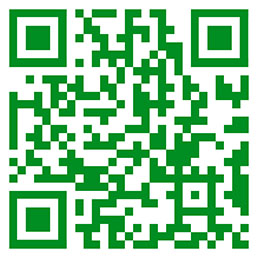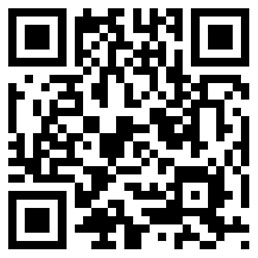有故事的英语单词
朝三暮四、牛郎织女,你会用地道英语讲述中国传统故事吗?,下面一起来看看本站小编澎湃新闻给大家精心整理的答案,希望对您有帮助
有故事的英语单词1
朝三暮四、牛郎织女、造化弄人、过年的由来……这些耳熟能详的中国传统成语、故事,要怎么用英语来讲述?
优美的中国故事,也是沟通中国和世界的桥梁。《功夫熊猫》《花木兰》这样的中国故事,经过好莱坞的重新演绎,不仅受到欧美观众的青睐,也让中国观众感到似曾相识又惊艳新奇——原来,中国故事也可以讲得这么世界。学习英语、融入世界的同时,也需要知道自己文化的“跟”在哪。
活动现场
8月25日,一套基于中国传统文化开发的英语读物——《中国好故事Tales of China》新书发布会在朵云书院上海中心旗舰店召开,以“全球思维•中国故事”为主题,爱乐奇执行副总裁兼董事Andrew Shewbart(唐威廉)、知名教育专栏作家楼夷、资深教育媒体人吴慧雯、本书责任编辑顾晓清四位嘉宾汇聚一堂,就全球思维、分级阅读及英语学习等话题展开对谈。
活动现场
《中国好故事Tales of China》由华东师范大学出版社、爱乐奇共同开发,唐威廉谈道,现在中国孩子都有学习英语的需求,但是现在国内很多学习材料内容都脱离了中国文化的土壤,这并不利于孩子学习并理解英语。
唐威廉说,如今中国家长对于英文故事书越来越重视,他们给孩子看原版书,听英文歌,去国外参加夏令营,或者带孩子过万圣节、感恩节和圣诞节,希望能把语言融会贯通。但这样是否就有用呢?“创造一个英文环境当然重要。但同样重要的是,语言需要融合在学习者本身的生活中。‘磨耳朵’的先决条件,即内容是孩子可以理解的,为欧美市场出版的英文读物恰恰离中国孩子的日常生活太远。”
“比如,中国孩子每天早饭吃着包子、油条、馒头、荷包蛋,但是学的英语却是hamburger(汉堡包)、cereal(燕麦)。中国孩子周末去游乐场玩,而欧美英语教材里的孩子们每周去church(教堂)。一年里,中国孩子更熟悉的是腊八粥、粽子、赛龙舟和拿红包。所以我们想开发一套基于中国传统文化开发的英语读物,贴近中国孩子的日常生活,让中国孩子在自己熟悉的传统文化中养成全球思维。”唐威廉说。
“从零基础到能够流畅用英语进行日常交流需要多久?”教育专栏作家楼夷向现场的家长、孩子们提出这个问题,现场家长们回答均在2、3年之上,而楼夷给出了令人吃惊的答案“一个月”。
这个时间是楼夷女儿的亲身经历,楼夷在美国交流访问期间,送女儿上幼儿园,“我女儿一点英文都不懂,因为不能和同学交流很痛苦,每天都要哭着送她去幼儿园。但是一个月之后,她能够自然听、说,与同学交流无障碍。这个经历给我的感悟很大,小朋友的潜力是无限的。《中国好故事Tales of China》每篇都配套了音频,听故事对孩子的帮助是非常大的,而且这些故事小朋友大多都知道内容,孩子能听懂20%,就能猜到50%的内容,能听懂50%,就知道100%的内容,这对他们的学习会有很大的激励作用,听、说是第一步。”
《中国好故事Tales of China》
为什么要用英语讲述中国传统故事?楼夷认为,对于中国孩子,学习英语,并不只是为了学会一门外语,而是为了在全球化的环境中,用世界听得懂的语言,有效传递自己的声音。而第一步,就是从了解全球思维、了解全球性的语言开始,从了解我们中国自己的文化开始。
资深教育媒体人吴慧雯提出了“文化源代码”的观点。在她看来,无论是中国的故事还是外国的故事,从本源上看讲的是同样的事情。比如英语中有“friendship”,中文中有“千里送鹅毛”,“千里送鹅毛”这个简短的成语中,包含的是中国的历史、友谊观念,以及中国人怎样立身,本质上也是思考自己,以及自己与他人的关系。
“阻碍人的从来不是语言,而是思维。‘跨文化理解力’是中国孩子走向世界的必备能力之一,其本质是能够在全球化的环境中找到自己,找到自己的思维方式。而思维方式这些源代码,就在我们的成语故事及更多的传统文化当中。用英语去讲述中国故事,我们也会在碰撞的过程中发现相通性,在世界环境中找到中国思维的源代码。”吴慧雯说。
《中国好故事Tales of China》由前迪士尼全球制作人和迪士尼教育部门创始人梅琳达•莉莉•汤普森领导的华裔美国作家团队创作,以地道的英语、生动的写作诠释中国传统故事。丛书共包括75个故事、100集音频,讲述中国的节日、成语、民间传说和神话故事。
每个故事配有原创插画、故事背景、词汇扩展、配套课后趣味问答等内容,同时每个故事都配有原汁原味的英文朗诵音频,方便读者收听音频故事,同时锻炼阅读和听力。《中国好故事Tales of China》共16册,由贴近小读者兴趣的成语、传说、远古故事三大类构成,具体分为远古时代的动物、远古时代的魔力、夏秋节日、冬春节日、无巧不成书、英雄出少年、仁者见仁、知者不惑、情比金坚、女儿当自强、误人误己、皆大欢喜、造化弄人、人生真谛、大智若愚、才智双全等。
16本书根据阅读难度分为三个等级:G1(美国小学一年级)、G2(美国小学二年级)、G3(美国小学三年级),蓝思指数从420L到660L不等,适合中国小学三年级到高中读者。这也是中国第一套带有蓝思指数的英文版传统中国故事。
本套丛书的责任编辑顾晓清介绍,为了将故事、教育、艺术相结合,《中国好故事Tales of China》组建了一支全球化的专家团队。过去的一年间,来自全球七个国家的三十多位专家,通过互联网来合作,跨越了语言、时差的障碍以及文化的差异,为中国乃至全球的小朋友献上了这套有声有色的中国传统文化盛宴。
有故事的英语单词2
同学们请先读一读这篇故事,看有多少单词是您的拦路虎,然后再看译文和后边的单词,希望您多读几遍,收获一定多多哟!
第一关读故事找生词
The Ceremony!
The small group of boys quietly put the oars into their boats and walked into the oak orchard that would lead to an obscure hiding place where they would take an oath to become members of a secret organization. Most were the offspring of previous members whose obsessions were to have their children follow in their footsteps. The boys were therefore the optimum candidates; children of the rich who would be obedient to anyone who would make them richer.
As their leader passed them under an olive tree that was obstructing the entrance to a small opening, a strong odor reached all of their noses. It was a nutrient rich smell that still somehow oppressed them all. But the odor and the opaque speech by their leader that followed did nothing to offset the optimism all were feeling that what they were doing was right. This was an organization that they all wanted to be part of, no matter what.
Then an obscene ritual occurred which the boys would never forget. When it was over the boys were reminded that they were now all under an oath of silence and the few new members of the organization with a limited occupancy. It was too late to opt out.
As a final act they all had to drink a drink that was certainly not good for one's nutrition. It tasted like blood. But they were all in now. And none of them would ever be the same again.
入会仪式
一小群男孩悄悄地把桨放进小船并走进橡树园,橡树园通向一个偏僻的隐藏地点,他们要在那里宣誓成为一个秘密组织的成员。他们大部分是先前的成员的子女,那些成员都有一种无法摆脱的思想,那就是让他们的孩子步他们的后尘,因此这些男孩是最佳人选:他们都是富家子弟,谁能使他们更有钱,他们就服谁。
他们的首领在一棵橄榄树下面从他们面前走过,橄榄树把一个小洞的入口堵住了,一股奇怪的气味直冲他们的鼻子。那是一种很有营养的味道,不知怎的还是让他们有些烦恼,但是那种味道及随后首领发表的令人难以理解的讲话并没有抵消他们的乐观情绪,他们觉得他们做得对。无论如何,这是他们都想加入的组织。
然后就举行了男孩们永生难忘的可恶的仪式。仪式结束之后,男孩们被提醒他们现在已经发誓要保持安静,他们少数几个新成员居住的地方很小。现在决定退出已经太晚了。
他们要做的最后一件事是喝下一种东西,那东西肯定没有营养,喝起来像血,但现在他们都已经入会,他们谁也不会跟以前一样了。
第二关背单词
NEW WORDS
nutrient
n. 营养品,滋养物
a. 营养的,滋养的
nutrition
n. 营养
oak
n.1.栎树,像树
2.栎木,像木
oar
n. 桨,橹
oath
n.1.誓言,誓约
2.咒骂,诅咒语
on/under oath
在法庭上宣过誓
obedient
a. 服从的,顺从的
obscene
a.1.淫秽的,下流的
2.可憎的,可恶的
obscure
a.1.不著名的,不重要的
2.费解的,模糊不清的
3.隐藏的,偏僻的
vt. 使变模糊,掩盖
obsession
n. 困绕,无法摆脱的思想(或情感)
obstruct
vt.1.阻塞,堵塞
2.阻碍,阻止,妨碍
occupancy
n. 占有,使用,居住
odor
n. 气味,风味,声誉
odour
见odor
offset
vt. 补偿,抵消
offspring
n.1.子女,子孙,后代
2.(动物的)崽
olive
n. 橄榄,橄榄树
opaque
a.1.不透明的,不透光的
2.难理解的,晦涩的
oppress
vt.1.压迫,压制
2.使(心情等)沉重,使烦恼
opt
vi. (for)选择,挑选
optimism
n. 乐观,乐观主义
optimum
a. 最合适的,最优的,最佳的
orchard
n.果园
第三关疯狂朗读故事,通过句子加强记忆,会背最佳。
The Ceremony!
The small group of boys quietly put the oars into their boats and walked into the oak orchard that would lead to an obscure hiding place where they would take an oath to become members of a secret organization. Most were the offspring of previous members whose obsessions were to have their children follow in their footsteps. The boys were therefore the optimum candidates; children of the rich who would be obedient to anyone who would make them richer.
As their leader passed them under an olive tree that was obstructing the entrance to a small opening, a strong odor reached all of their noses. It was a nutrient rich smell that still somehow oppressed them all. But the odor and the opaque speech by their leader that followed did nothing to offset the optimism all were feeling that what they were doing was right. This was an organization that they all wanted to be part of, no matter what.
Then an obscene ritual occurred which the boys would never forget. When it was over the boys were reminded that they were now all under an oath of silence and the few new members of the organization with a limited occupancy. It was too late to opt out.
As a final act they all had to drink a drink that was certainly not good for one's nutrition. It tasted like blood. But they were all in now. And none of them would ever be the same again.
有故事的英语单词3
Suppose you are listening to a program in English and hear the word "borrow". You have heard this word many times but forget its meaning.
假设你在听一个英语节目并听到了单词"borrow"。你听过这个单词很多遍,但忘记了意思。
So, you look up the equivalent word in your own language. Ahh, yes, now you remember!
于是你在自己的语言里查找对等的单词。啊,对,现在你想起来这个单词的意思了!
A few days later, you see the word again, but again cannot remember its meaning. Why? It is easy to blame yourself or think, I have a terrible memory.
但几天后,你再次见到这个单词时,你却不记得它的意思了。这是为什么呢?你可能会直接怪自己或者觉得自己记性很差。
But your memory is not the problem. The problem is that translating a word to its equivalent word in your language is not an effective way to learn vocabulary.
但其实不是记性的问题。问题在于:将一个单词转换为自己语言中对等的单词,这种方式并非掌握词汇的有效方式。
This is because it does not create strong connections in the brain, something critical for remembering information.
这是因为这种方式不会在大脑中建立强有力的联系,无法建立记忆信息的关键要素。
To really learn words, you have to bring attention to them and connect them with mental images or your existing knowledge. This helps your brain recall words quickly and easily when you need them.
要真正地掌握单词,就要花点心思,将单词跟脑海里的图像或者已知的知识联系在一起。这种方式可以帮助你的大脑在有需要的时候快速轻易地回想起单词。
On today's Education Tips, we will discuss three methods that use images to retain vocabulary. First, let's discuss the most straightforward method: Using pictures as visual aids.
在今天的《学习技巧》中,我们将讨论3个通过图像来记忆词汇的方法。首先,我们来讨论一下最直接的方法:将图像作为视觉辅助。
Danielle Zelin is an English teacher and teacher trainer. She has taught for nearly 25 years, including in South Africa, Latvia and Mauritius, her homeland.
丹妮尔·泽林是一名英语老师、培训师。她授课近25年,授课地点包括但不限于南非、拉脱维亚和自己的故乡毛里求斯。
Zelin says visual aids are important for language learners because humans think in images. When we hear a sentence. . . when somebody is talking to us, we see the pictures.
泽林表示,视觉辅助对语言学习者来说很重要,人们就是通过图像来进行思考的。当我们听到一个句子时……当有人跟我们说话时,我们会脑海中会出现图像。
We don't see the words. We don't see the sentence in our brain. Like Yesterday, I went to the beach.
我们的脑海中不会直接出现单词和句子。比如,"昨天,我去海滩了。"
If I tell you that, you will see me on the beach. You will not see the sentence in written form.
如果我跟你说这句话,你会脑海中会出现我在海滩的样子,而不会直接出现这句话。
She uses pictures or images with her beginning students and some of her mid-level students. Cristiane Galvao has used pictures to teach vocabulary to students of every level, from grade school to the university level.
她通过图像来教新生以及部分中级学生。克里斯琴·盖尔沃通过图像来将不同阶段的学生学习词汇,小学到大学的都有。
Galvao, who is based in California, has taught English for 20 years, including in the United States and Brazil. She suggests learners make visual dictionaries with pictures from the internet, for example.
盖尔沃在加利福尼亚教了20年代的英语,也曾在美国和巴西教授英语。比如,她建议学习者通过网上的图像建立起视觉词库,
This would involve writing an English word next to its image. Before you make the dictionary, think about your goals, she says.
包括在某个单词的图像旁写下这个单词。她说,在词库构建之前,要想一下自己的目标是什么。
If the goal is to reinforce what you already learned about, put the words in alphabetical order. And organize them into related groups.
如果目标是巩固自己已经学到的东西,那就把单词按照字母顺序排列。再把单词归到相关的群组中。
But if the goal is to write a sentence using each new word, then you probably do not need to put the words into groups.
但如果目标是用每个新单词写句子的话,那应该就不需要把单词归到群组中了。
Next, let's talk about mnemonics. These are mental tools you can use to recall information better.
接下来,我们来聊聊记忆术。有些工具可以用来更好地记忆起一些信息。
Most mnemonics tools involve creating mental imagery to trigger your memory. Some of you have probably already done this without realizing there is a name for it.
大多数记忆术工具都包括在脑海中建立起图像来触发记忆。大家可能之前已经这样做过,只是没有意识到这个方法是有名字的。
One great mnemonics tool is keywords. This involves making a mental image that ties two similar-sounding words together.
一个很棒的记忆术工具是关键词,包括在脑海中建立起图像,把2个发音相似的单词联系在一起。
Take the word "bald" as an example. It means having little or no hair.
以单词"bald"为例。这个单词的意思是头发很少或者没有头发。
The word "ball" sounds like "bald" and can help us remember the target word. In your mind, make a mental picture of a ball with a face on it.
单词"ball"的发音跟"bald"很像,可以帮我们记住目标单词。请在你的脑海中建立起一张图像,图像上是带有脸的一个球。
Then, picture it with no hair on top, maybe a little on the sides. Keep this image in your mind for maybe 15 seconds.
然后,想象图像中头顶上是没有头发的,或许两侧有一点头发。让这个图像停留在脑海中大概15秒的样子。
The next time you try to recall "bald," it will be easier because of the keyword and connected imagery. Alex Mullen is a biomedical engineer and one of the world's top memory competitors.
下一次你尝试回想"bald"的时候,或许就更容易了,因为有关键词,也有联想组合的画面。亚历克斯·马伦是生物医学工程师,是世界上记忆力最好的人之一。
In 2016, he was the USA Memory Champion. Mullen calls the mnemonics keywords tool "the art of memory"
2016年,他曾获得美国记忆力冠军。马伦将记忆术关键词的工具称为"记忆的艺术",
because your mind makes a kind of picture stories. In his video on mnemonics keywords,
因为人的大脑要制造与故事有关的图像。在他有关记忆术关键词的视频中,
he talks about remembering the target word "corral" by joining its imagery with an image of a sea coral. He draws a group of stick figures trapped -- or corralled – in a coral.
他谈及自己记忆目标词汇"corral"的方法是将脑海中的画面与海里的珊瑚联系起来。他画了一些被困(corralled)在珊瑚里的小人儿。
In real life, you would probably make a mental image rather than a drawing. But Mullen's drawing demonstrates the idea of connecting a mental image of the target word with its keyword.
在现实生活中,大家大概会直接想象图像,而不会画出来。但马伦画出来的这种方式很好地示范了将目标词汇脑海画面跟其关键词联系在一起的想法。
One final method for today is word maps, also known as semantic maps or word webs. In a word map, you write a central word or idea in the middle and connect it with lines to related words.
今天要介绍的最后一个方法是单词联想图,也叫语义图或者单词网。在单词网的中间写一个中心词汇或点子,用线把它跟相关的一些单词连起来。
This helps to build mental associations between related ideas. Danielle Zelin gives the example of the word "sharp".
这样有助于在脑海中构建起相关电子之间的联系。丹妮尔·泽林用"sharp"举了例子。
If you center that word, you can connect it to words of things that are sharp, such as knife, paper and scissors. Galvao says not every student will learn through a word map.
如果将这个词作为中心词汇的话,可以把它跟锐利的东西联系在一起,如刀、纸、剪刀。盖尔沃说,不是每个学生都会通过单词网来学习单词。
But the maps can help you visualize and create a method that works for you. I'm Alice Bryant.
但单词网可以帮助你进行视觉化的联想并建立起适合自己的方法。爱丽丝·布莱恩特为您播报。


